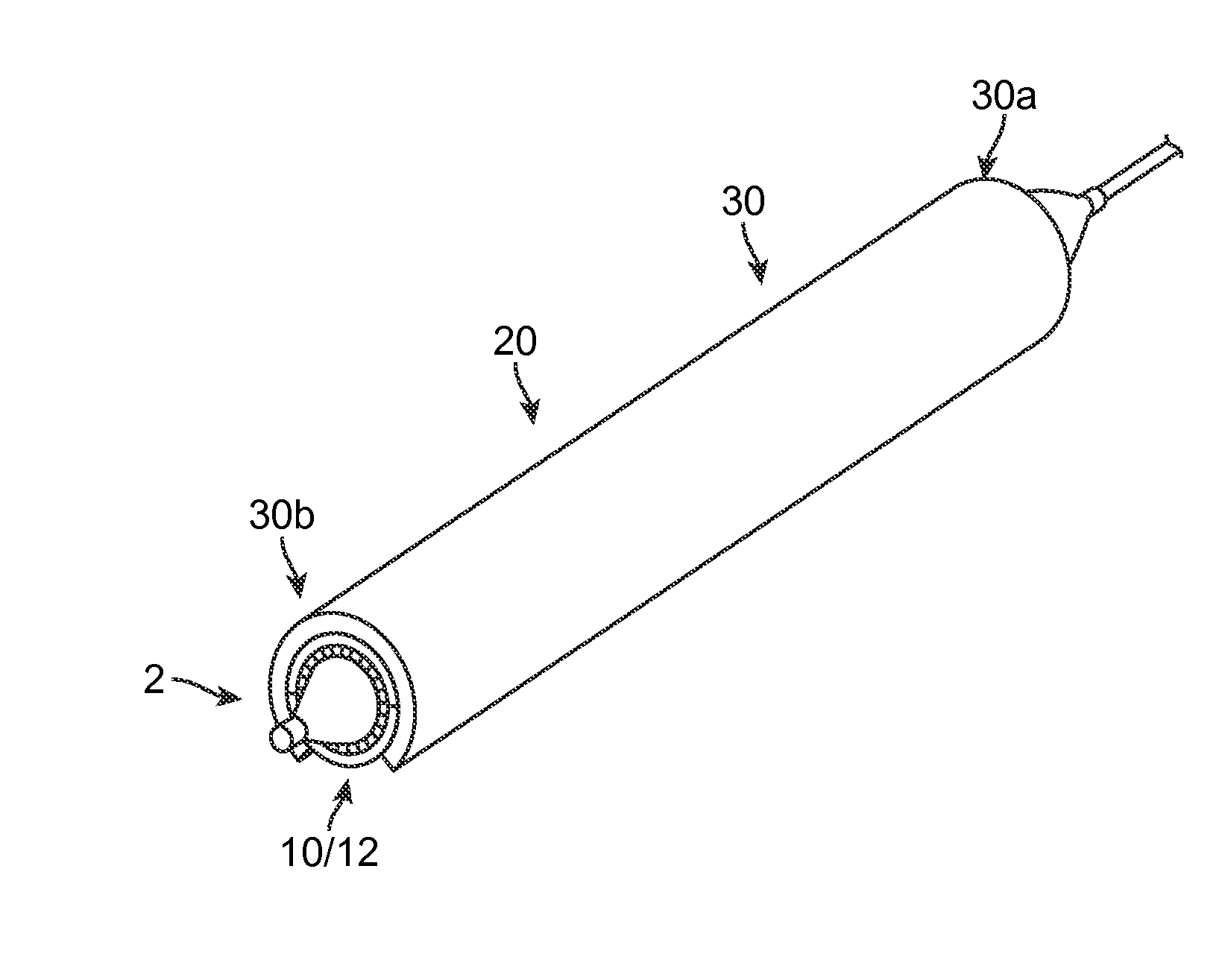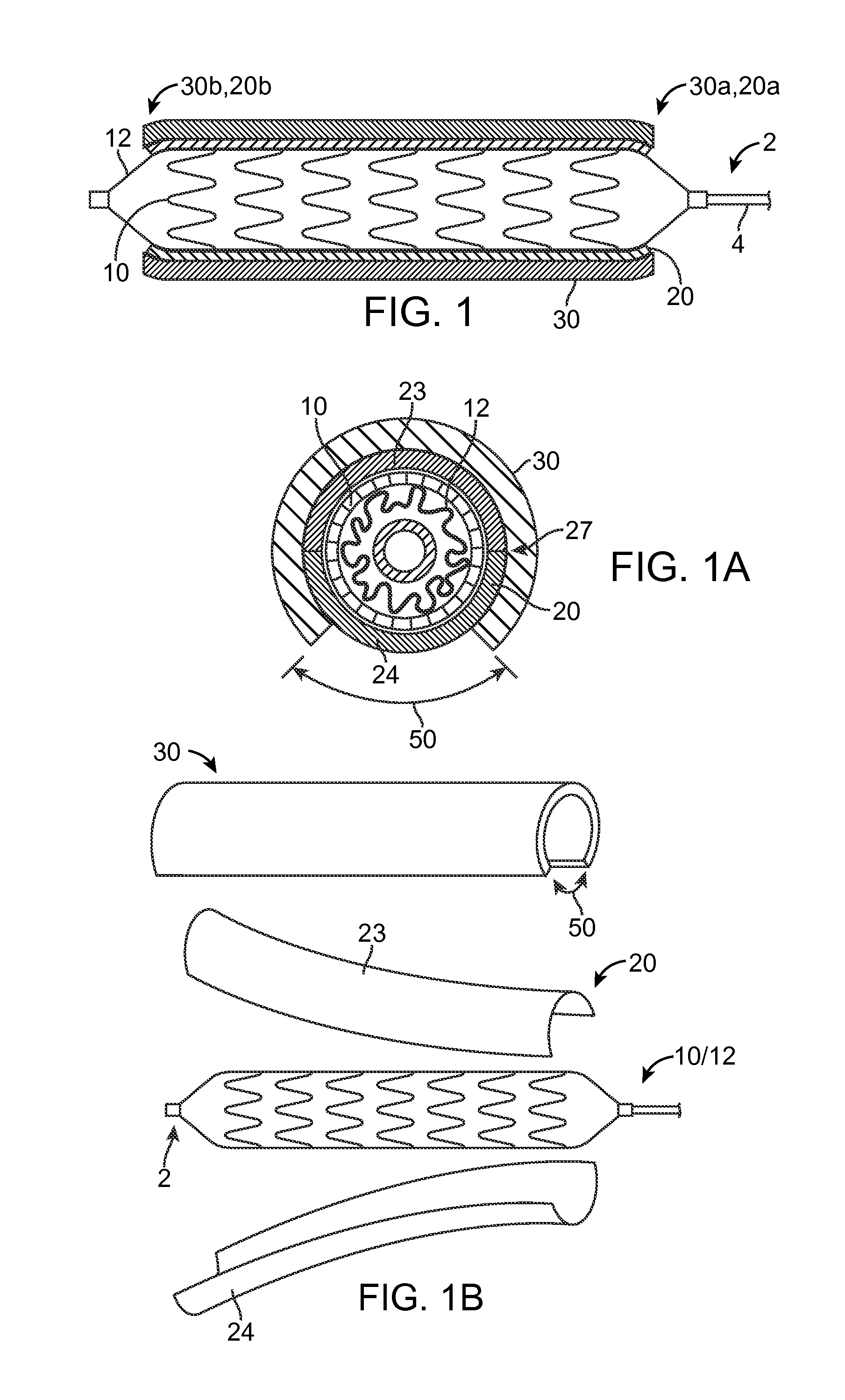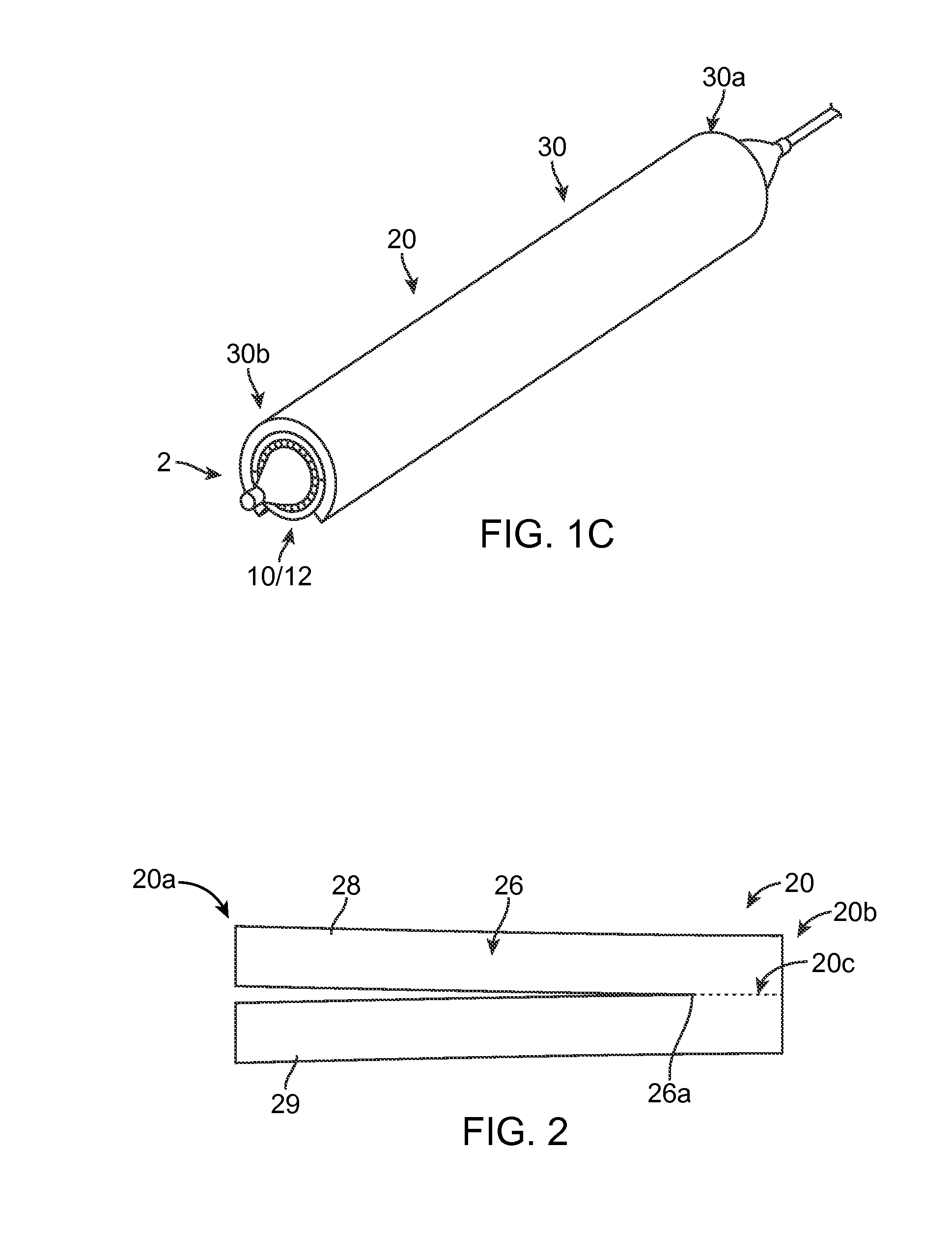Clip sheath for a polymer scaffold
a polymer scaffold and clip technology, applied in the field of medical devices, can solve the problems of many challenges to overcome, the scaffold made from such polymers also tends to be brittle or limited in fracture toughness, and the accepted process of metal stent handling cannot be used anymore, so as to facilitate the removal of the constraining sheath and minimize the recoil of the scaffold.
- Summary
- Abstract
- Description
- Claims
- Application Information
AI Technical Summary
Benefits of technology
Problems solved by technology
Method used
Image
Examples
Embodiment Construction
[0059]For purposes of this disclosure, the following terms and definitions apply:
[0060]The term “about” means 20%, 15%, 10%, 5%, 4%, 3%, 2%, 1.5%, 1%, between 1-2%, 1-3%, 1-5%, or 0.5%-5% less or more than, less than, or more than a stated value, a range or each endpoint of a stated range, or a one-sigma, two-sigma, three-sigma variation from a stated mean or expected value (Gaussian distribution). It is understood that any numerical value, range, or either range endpoint (including, e.g., “about none”, “about all”, etc.) preceded by the word “about” in this disclosure also describes or discloses the same numerical value, range, or either range endpoint not preceded by the word “about”.
[0061]The term “rigid” is a relative term used to describe something that is substantially stiffer than some other thing. For example, a first sheath or tube that is radially rigid, rigid in the radial direction, or simply rigid as compared to a second sheath or tube means that the first sheath / tube i...
PUM
| Property | Measurement | Unit |
|---|---|---|
| Fraction | aaaaa | aaaaa |
| Fraction | aaaaa | aaaaa |
| Fraction | aaaaa | aaaaa |
Abstract
Description
Claims
Application Information
 Login to View More
Login to View More - R&D
- Intellectual Property
- Life Sciences
- Materials
- Tech Scout
- Unparalleled Data Quality
- Higher Quality Content
- 60% Fewer Hallucinations
Browse by: Latest US Patents, China's latest patents, Technical Efficacy Thesaurus, Application Domain, Technology Topic, Popular Technical Reports.
© 2025 PatSnap. All rights reserved.Legal|Privacy policy|Modern Slavery Act Transparency Statement|Sitemap|About US| Contact US: help@patsnap.com



